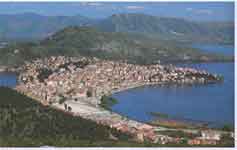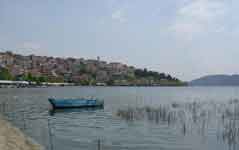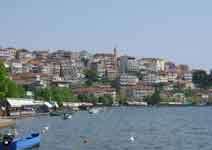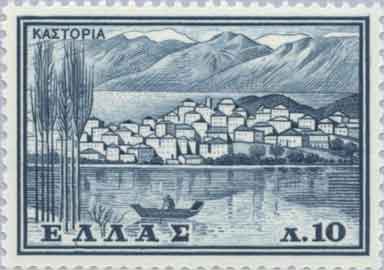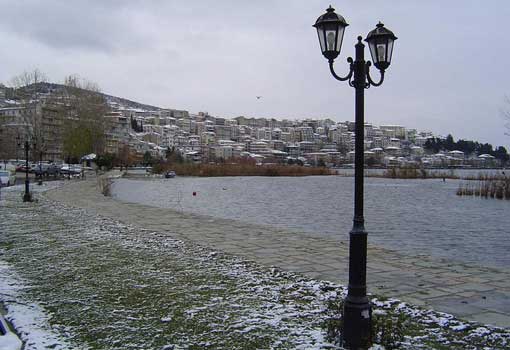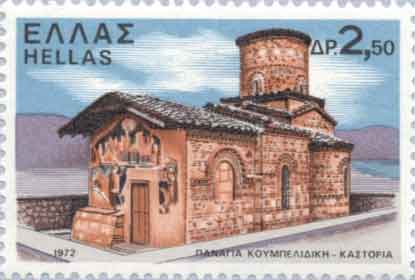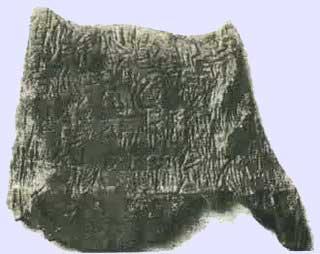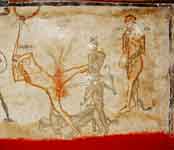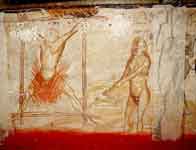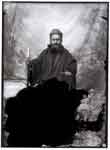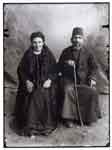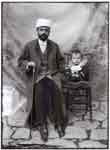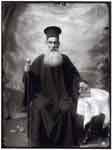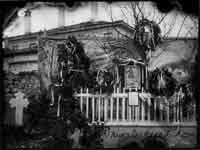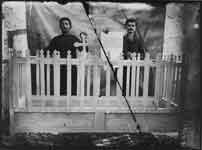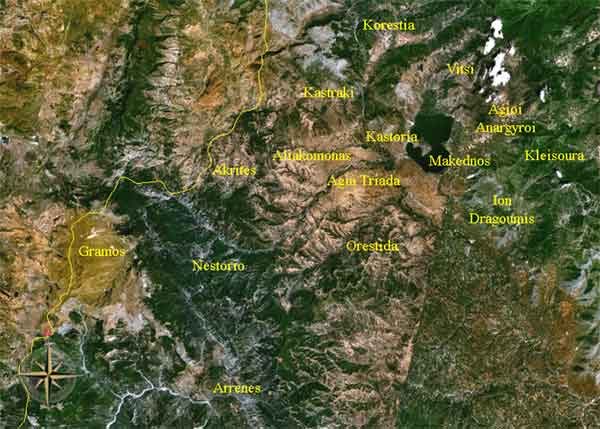.
Administrative Region : West Macedonia
Regional unit : Kastoria
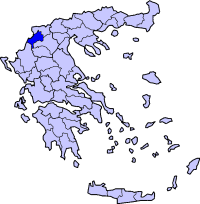
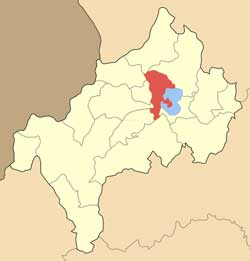
Kastoria (Greek: Καστοριά Kastoriá [kastoriˈa]) is a city in northern Greece in the periphery of West Macedonia. It is the capital of Kastoria peripheral unit. It is situated on a promontory on the western shore of Lake Orestiada, in a valley surrounded by limestone mountains. The town is known for its many Byzantine churches, Ottoman-era domestic architecture, fur clothing industry, and trout.
Name
The name "Kastoria" first appears at the end of the 10th century, though a town existed on the site since at least the sixth century.[1] There are several theories about the origin of the name Kastoria.[2] The dominant of these is that the name derives from the Greek word κάστορας (kástoras, meaning "beaver"). Trade in the animal's fur, sourced from nearby Lake Orestiada, has traditionally been an important element of the city's economy. Other theories propose that the name derives from the Greek word κάστρο (kástro, meaning "castle"; from the Latin word castra) or from the mythical hero Κάστωρ (Kástōr), who may have been honoured in the area. The word is sometimes written with a C, Castoria[3], especially in older works. From Greek, the name was borrowed into Turkish as Kesriye. The Serbian, Bulgarian and Slavic Macedonian name of the city is Kostur (Cyrillic: Костур). The town features in the Serbian 18th century epic poem "Marko Kraljević i Mina od Kostura" (ie Prince Marko and Minnas of Kastoria).
Municipality
The municipality Kastoria was formed at the 2011 local government reform by the merger of the following 9 former municipalities, that became municipal units:[4]
Agia Triada
Agioi Anargyroi
Kastoria
Kastraki
Kleisoura
Korestia
Makednoi
Mesopotamia
Vitsi
The church of St Stephen.
Antiquity
Kastoria is believed to have ancient origins; it has been identified with the ancient town of Celetrum, possibly located on a hill above the town's current location, and captured by the Romans in 200 BC.[5] The Roman Emperor Diocletian (ruled 284-305 AD) founded the town of Diocletianopolis somewhere in the vicinity.[5] After it was destroyed by barbarians, the Byzantine Emperor Justinian I relocated the town on a promontory projecting into Lake Orestiada, the town's current location, and may have renamed it Justinianopolis.[5]
Middle Ages
The church of Three Saints.
The church of St Nicholas Kasnitzes.
|
David Selinitziotis. Agios Prodromos Church 1727
|
|
Kastoria's history was peaceful until the 10th century, when its strategic position led to it being contested between the Byzantine Empire and the First Bulgarian Empire. The town was conquered by the Bulgarian Empire in the mid-9th century and remained in Bulgarian hands until the fall of First Bulgarian Empire at the hands of Basil II in the beginning of the 11th century, when it re-joined the Byzantine Empire. The town was later re-conquered by Bulgaria under Kaloyan and Ivan Asen II in the 13th century but was recovered by the Nicaean Empire in 1246.[6] It was held by the Serbian Empire between 1331 and 1380 and by the Albanian Muzaka family in the 1380-1385 period.[7]
Ottoman Era
Further information: Ottoman Greece
Around 1385, the Ottoman Empire conquered Kastoria, but it is unclear whether by force or by an agreement with its Albanian rulers.[8] The city would remain under Ottoman rule until the First Balkan War (1912), when Greece took it. The 1913 treaties of London and Bucharest incorporated Kastoria into the Greek state.
World War II
During both World War II and the Greek Civil War, the town was repeatedly fought over and heavily damaged in the process. It was nearly captured by the Communist Democratic Army of Greece in 1948, and the final battles of the civil war took place on the nearby Mount Gramos in 1949.
Jewish Community
In 1940 the Jewish population in Kastoria numbered 900,[9] composed predominantly of Ladino language speaking Sephardic Jews. Many family names were of Italian origin as a result of emigrations (originally from Spain) via Italy in 17th and 18th centuries.
In late March 1944, under Nazi German occupation during World War II, 763 Kastorian Jews were taken prisoner by Nazi troops and sent to Auschwitz-Birkenau,[9] as part of a program of deliberate extermination of Jews during the Holocaust. Kastoria was liberated by the guerrillas of the Greek People's Liberation Army less than 4 months after the Jewish citizens were forced to the concentration camps. By the end of the war in 1945, only 35 of the original population had survived, the vast majority of the community having been killed in concentration camps.[9]
Economy
Panorama of the city.
Kastoria is an international centre of fur trade, which dominates the local economy. Indeed (as mentioned above) the town was possibly named after one of the former staples of the trade – the European beaver (kastóri in Greek), now extinct in the area. Trading in mink fur now predominates and every year an international showcase of fur takes place in the city. Other industries include the sale and distribution of locally grown produce, particularly wheat, apples, wine and fish. Recently a large shopping center has been built in the city of Kastoria. Kastoria has 16 local radio stations,[10] 2 TV stations, 5 daily newspapers and 7 weekly ones.[11] The town's airport is named Aristotelis Airport.
Landmarks
The promenade.
Kastoria is an important religious centre for the Greek Orthodox Church and is the seat of a metropolitan bishop. It originally had 72 Byzantine and medieval churches, of which 54 have survived, including St Athanasius of Mouzaki. Some of these have been restored and provide useful insight into trends in Late Byzantine styles of architecture and fresco painting. The Museum of Byzantine History located on Dexamenis Square houses many examples of Byzantine iconography. Kastoria is filled with old manors dating to the Ottoman period, while parts of the old Byzantine walls also stand.
Sports
Kastoria FC is the town's football team. It was established in 1963 when three local sides joined to form one stronger team representing the town. The team's most successful years to date were 1974 when it was promoted to the Greek first division and competed there for a year, and then 1980 when it won the Greek Cup after an impressive 5-2 victory over Iraklis FC in the final. The team are hoping to return to the first division this year as they are currently competing for the second division (Beta Ethniki) title.
|
|
|
|
|
|
|
|
Population
Year Town population Municipality population
1981 20,660 -
1991 14,775 -
2001 14,813 16,218
Location
Bilisht Florina Amyntaio - Edessa
Korçë Brosen Ptolemaida - Veria
Ioannina Neapoli, Kozani - Siatista - Grevena Kozani - Larissa
Notable people
Athanasios Christopoulos (1772–1847), poet
Dimitris Diamantidis (1980-), basketball player
Jagnula Kunovska (1943-), politician, jurist and writer
Nicholas Lambrinides, founder of Skyline Chili, a famous restaurant chain in Cincinnati, USA
Qazim Baba, 15th century Muslim bektashi holy man.
Sevastos Leontiadis (1690–1765), educationalist
Lucas Samaras (1936-), artist
Maria Spiropulu (1970-), experimental physicist
See Also
Kastoria (peripheral unit)
Castoria (titular see)
Kostur dialect
References
The Columbia Encyclopedia, 2004.
Encyclopædia Britannica, 2005.
The Penguin Encyclopedia of Places, 1999.
Rough Guide to Greece, Mark Ellingham et al., 2000.
Notes
^ T. Ring, R.M. Salkin, S. La Boda. International Dictionary of Historic places: Southern Europe. Taylor & Francis, 1996. pp. 361-363
^ "Καστοριά - Προέλευση Του Ονόματος (Kastoria - origin of the name)" (in (Greek)). Δήμος Καστοριάς (City of Kastoria). Retrieved 2008-10-29.
^ "K". The Oxford English Dictionary, 2nd ed., 1989, online
^ Kallikratis law Greece Ministry of Interior (Greek)
^ a b c Aside from his birth name, he is also known as Vancho or Vanche Mihailov and Radko.
^ Andreev, J. The Bulgarian Khans and Tsars (Balgarskite hanove i tsare, Българските ханове и царе), Veliko Tarnovo, 1996, p. 200, ISBN 954-427-216-X
^ Facaros, Dana; Theodorou, Linda (2003). Greece. New Holland Publishers. p. 563. ISBN 1860118984.
^ Ring, Trudy; Salkin, Robert M.; Boda, Sharon La (1996), International Dictionary of Historic Places: Southern Europe, Taylor & Francis, pp. 361, ISBN 9781884964022
^ a b c "The Holocaust in Greece". United States Holocaust Memorial Museum. Retrieved 2009-09-29.
^ Greek radio stations, Kastoria
^ Makedonia newspaper, article of 2008/06/29 by Dimitra Tsapodimou
|
Municipalities and communities of the Kastoria Prefecture
Agia Triada | Agioi Anargyroi | Akrites | Ion Dragoumis | Kastoria | Kleisoura | Korestia | Makednos | Mesopotamia /Aliakmonas | Nestorio | Orestida | Vitsi |
| Ancient Greece
Science, Technology , Medicine , Warfare, , Biographies , Life , Cities/Places/Maps , Arts , Literature , Philosophy ,Olympics, Mythology , History , Images Medieval Greece / Byzantine Empire Science, Technology, Arts, , Warfare , Literature, Biographies, Icons, History Modern Greece Cities, Islands, Regions, Fauna/Flora ,Biographies , History , Warfare, Science/Technology, Literature, Music , Arts , Film/Actors , Sport , Fashion --- |
Retrieved from "http://en.wikipedia.org/"
All text is available under the terms of the GNU Free Documentation License



